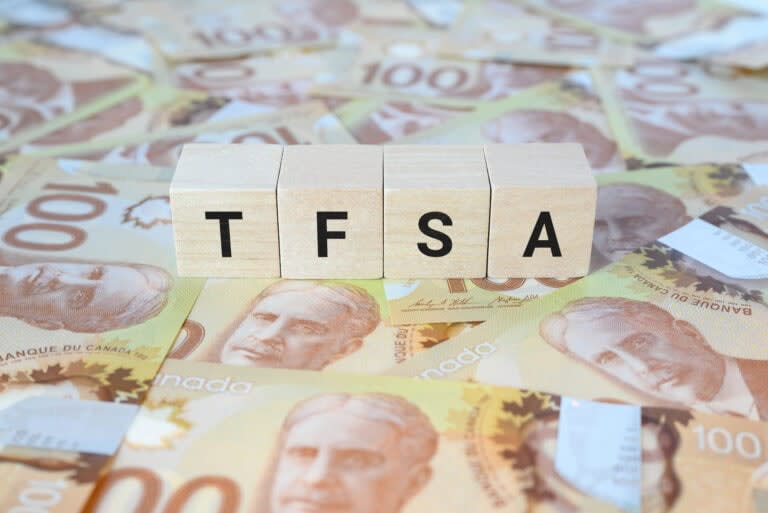How to Use a TFSA to Earn $250 Per Month in Tax-Free Passive Income

Written by Brian Paradza, CFA at The Motley Fool Canada
The Canadian Tax-Free Savings Account (TFSA) is an awesome financial engineering tool introduced in 2009. It allows individuals to legally avoid paying personal taxes on future investment income and capital gains. When used effectively, the account helps investors retain more wealth in retirement accounts, improve tax efficiency in an investment plan, and make monthly tax-free passive income.
However, the TFSA is also a two-edged sword. Investment losses realized in the account can’t be used to reduce income taxes for the tax year. Tax loss harvesting won’t work for you on TFSA losses. Investment gains are all yours to keep, and the losses are all yours to bear.
Conservative investors who are afraid of making losses in a TFSA or those with limited capacity to absorb investing losses could still make investments that earn low-risk income every month. Here’s how to design a TFSA that generates $250 in monthly passive income.
Among your investment options are low-volatility Canadian monthly dividend stocks, some real estate investment trusts (REITs), dividend-paying exchange-traded funds (ETFs), and other low-risk income trusts that make monthly income distributions.
Maximize your TFSA contributions first
It’s easier to work with a larger account. Designing a TFSA investment account that earns monthly cash flows will be easier if you maximize your contributions. For individuals eligible to contribute to a TFSA since its inception in 2009, the cumulative contribution room is $95,000 for 2024. However, you need a far lower account balance to generate $250 per month in tax-free passive income.
To determine how much you need, add up all the monthly paycheques you need per year (thus, $3000) and divide the annual income by the expected dividend yield (in decimals) you expect to earn annually.
A TFSA earning an average of 5% annual dividend yield needs a $60,000 capital balance to generate $250 a month, or $3,000 per annum. Likewise, a TFSA earning a 6% yield requires a lower balance of $50,000, and an 8% yield lowers your capital requirement to just $37,500. Be careful, though; investment risks usually increase with high-yield investments! There are no free lunches.
How to make $250 a month TFSA passive income
Fixed income (bonds and bond-like) investments usually offer the best low-risk investment options for recurring income, and BMO Money Market Fund (TSX:ZMMK) is a low-risk TFSA income investment option due to the low volatility of assets in the fund. The fund invests in short-term fixed-income securities, including treasury bills and high-quality money market instruments issued by corporations.
Incepted in 2021, the passive income-generating fund is managed by highly experienced professional money managers at BMO Global Asset Management, a subsidiary of Bank of Montreal, Canada’s third-largest chartered bank by market capitalization. The ETF plays a crucial role in preserving investor capital while earning a decent return in monthly income distributions. Investors pay low fees and the fund has a current management expense ratio (MER) of 0.13%, or $1.30, on each $1,000 invested. Even if the MER may increase to 0.28% when BMO finally removes its fee waiver, the fund is still a cheap ETF.
Funds flow into the ZMMK fund have been strongly positive this year, topping $1.2 billion year to date. Investors are allocating more and more capital to the low-risk fund in 2024.
The ETF recently paid $0.20 per share in monthly distributions for June to yield 4.8% annually. To be clear, dividends aren’t of a fixed amount and may vary slightly from month to month. However, monthly payouts averaged $0.21 per share every month during the past 12 months.
To earn $250 a month, working with the most recent monthly distribution, investors could allocate $62,363 to the fund, as shown in the table below.
Investment | Recent Price | Investment Amount | Number of shares | Recent Dividend Rate | Total Payout | Frequency | Total Annual Income |
BMO Money Market Fund (TSX:ZMMK) | $49.89 | $62,363 | 1,250 | $0.20 | $250 | Monthly | $3,000 |
Investors could use the ZMMK fund to form part of their core retirement holdings for capital preservation and add other investments, especially stocks, for potential capital growth.
The post How to Use a TFSA to Earn $250 Per Month in Tax-Free Passive Income appeared first on The Motley Fool Canada.
Should you invest $1,000 in Bmo Mutual Funds - Bmo Money Market Fund right now?
Before you buy stock in Bmo Mutual Funds - Bmo Money Market Fund, consider this:
The Motley Fool Stock Advisor Canada analyst team just identified what they believe are the 10 best stocks for investors to buy now… and Bmo Mutual Funds - Bmo Money Market Fund wasn’t one of them. The 10 stocks that made the cut could potentially produce monster returns in the coming years.
Consider MercadoLibre, which we first recommended on January 8, 2014 ... if you invested $1,000 in the “eBay of Latin America” at the time of our recommendation, you’d have $16,110.59!*
Stock Advisor Canada provides investors with an easy-to-follow blueprint for success, including guidance on building a portfolio, regular updates from analysts, and two new stock picks each month – one from Canada and one from the U.S. The Stock Advisor Canada service has outperformed the return of S&P/TSX Composite Index by 29 percentage points since 2013*.
See the 10 stocks * Returns as of 6/20/24
More reading
Can You Guess the 10 Most Popular Canadian Stocks? (If You Own Them, You Might Be Losing Out.)
How to Build a Bulletproof Monthly Passive-Income Portfolio in 2024 With Just $25,000
Fool contributor Brian Paradza has no position in any of the stocks mentioned. The Motley Fool has no position in any of the stocks mentioned. The Motley Fool has a disclosure policy.
2024

 Yahoo Finance
Yahoo Finance 